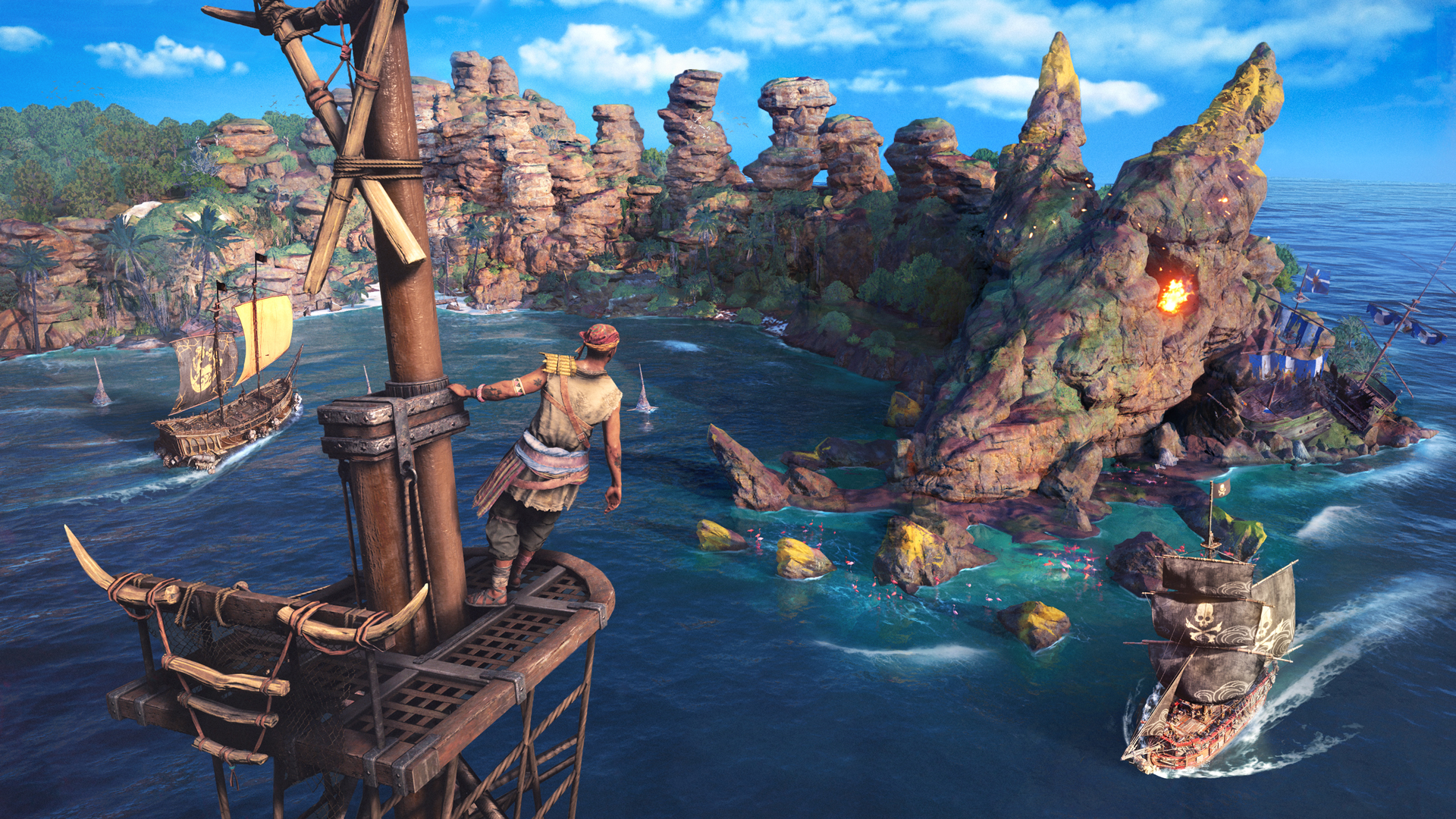GamesRadar+ Verdict
With excellent sailing and naval combat mechanics, it's a shame that Skull and Bones is so hampered by its lack of diversity, odd developmental decisions, and minimal capacity to offer a true pirate fantasy.
Pros
- +
Beautiful world to explore
- +
Naval combat is great fun
Cons
- -
Off-ship action is unfulfilling
- -
So much grind
- -
A lot of frustrating MMO decisions made
Why you can trust GamesRadar+
In Skull and Bones you are a ship, not a pirate. After roughly seven years of development, it's not quite the pirate fantasy that any of us were expecting. You embody a nameless, pretty personality-devoid master of the seas, with little more than some basic dialogue options to give you any sense of identity throughout the main campaign threads. For a publisher so well-versed in creating dynamic characters and complex worlds, Skull and Bones feels like a game trapped in the past.
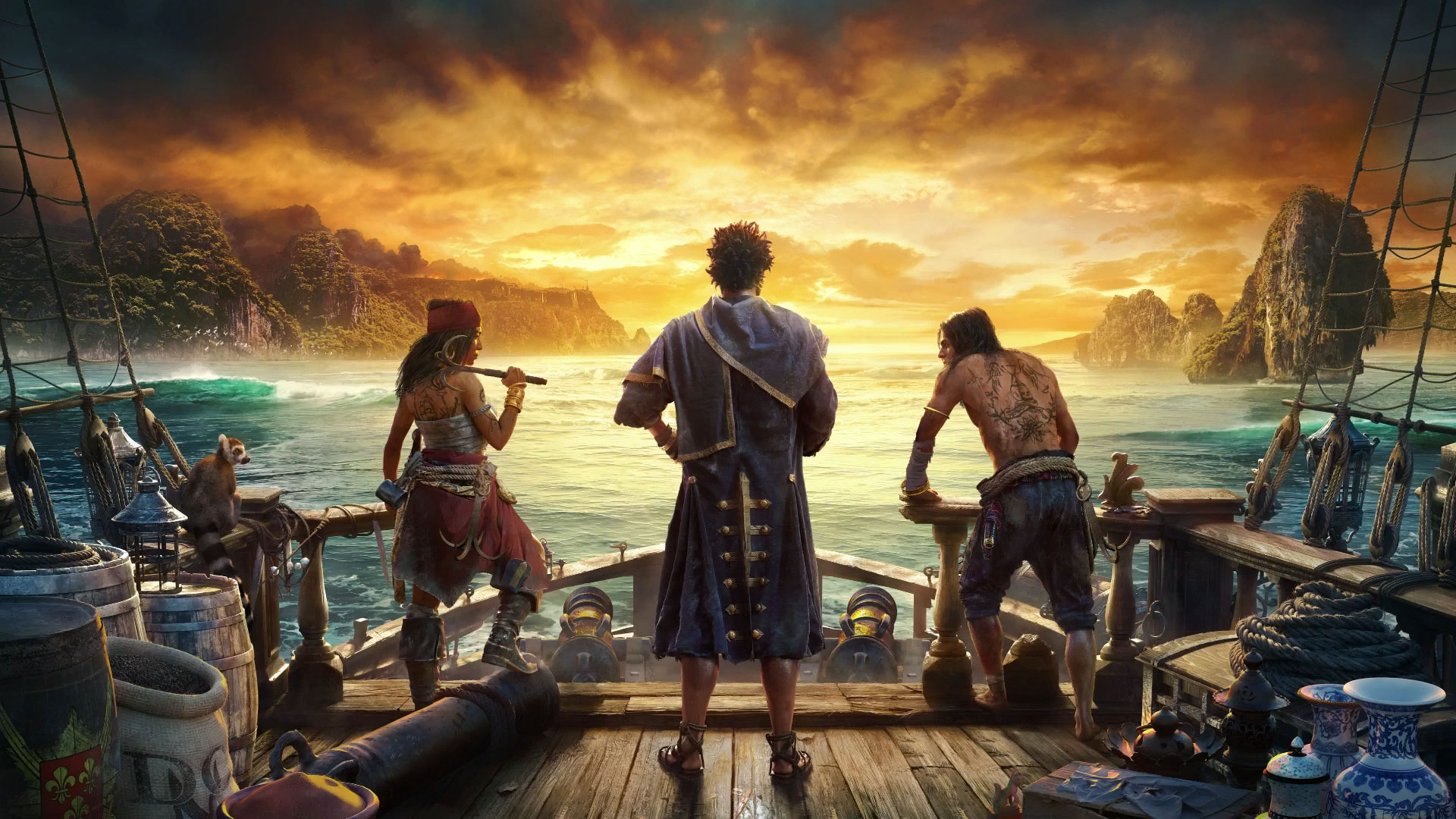
Release date: February 16, 2024
Platform(s): PS5, Xbox Series X, PC
Developer: Ubisoft Singapore
Publisher: Ubisoft
A lot of that sensibility is drawn from just how basic Skull and Bones' off-ship offerings are. Aside from two main hub areas – Saint Anne to the west and Telok Penjarah to the east – there's painfully little to do when you're not sailing. There are some areas where you can get on land to shop, grab new missions, dabble in the Black Market, or occasionally look for buried treasure, but they're all pretty basic, despite the attention paid to designing these areas to look pretty and be pretty explorable. You'll soon notice that NPCs are repeated, and that props are replicated even in the same small area. It doesn't take long for on-foot exploration to lose all its charm, and suddenly, pitstops become little more than functional and always speedy.
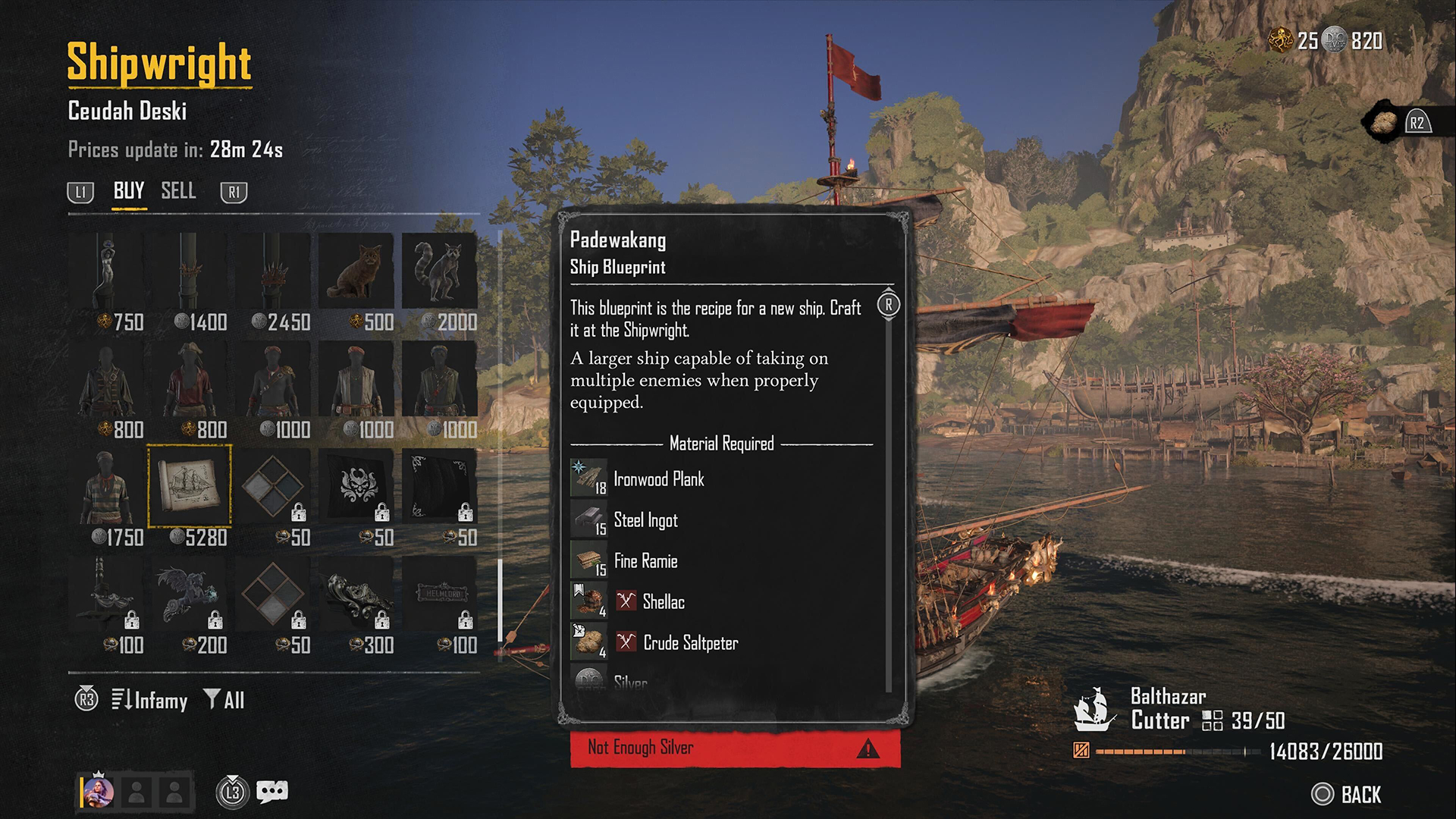
The only incentive for exploring the land is to find more blueprints, which are for sale all across the various islands. But this is really where the grind in Skull and Bones begins. You'll need to find and purchase blueprints for almost everything in the game. Armor and new weapons for your ship, the various pieces of furniture that you can add to your ship to give it various buffs like health or stamina regen or increased damage for certain weapon types, but it also applies to ammunition too. After spending time and money finding the blueprint and then crafting a torpedo gun for my brand new Bombardier ship, I was frustrated to find that not only did I not have the blueprint for the ammo, nowhere in Telok Penjarah had the rockets I needed to arm it. Instead, I had to go off sailing to find someone with either the blueprint for them, or boxes of ammo for sale, before I could actually make the weapon battle ready. It's an odd system, and one that quickly exposes the drawn-out repetition of the long game in Skull and Bones and the hidden looter shooter at its heart.
Not plain sailing
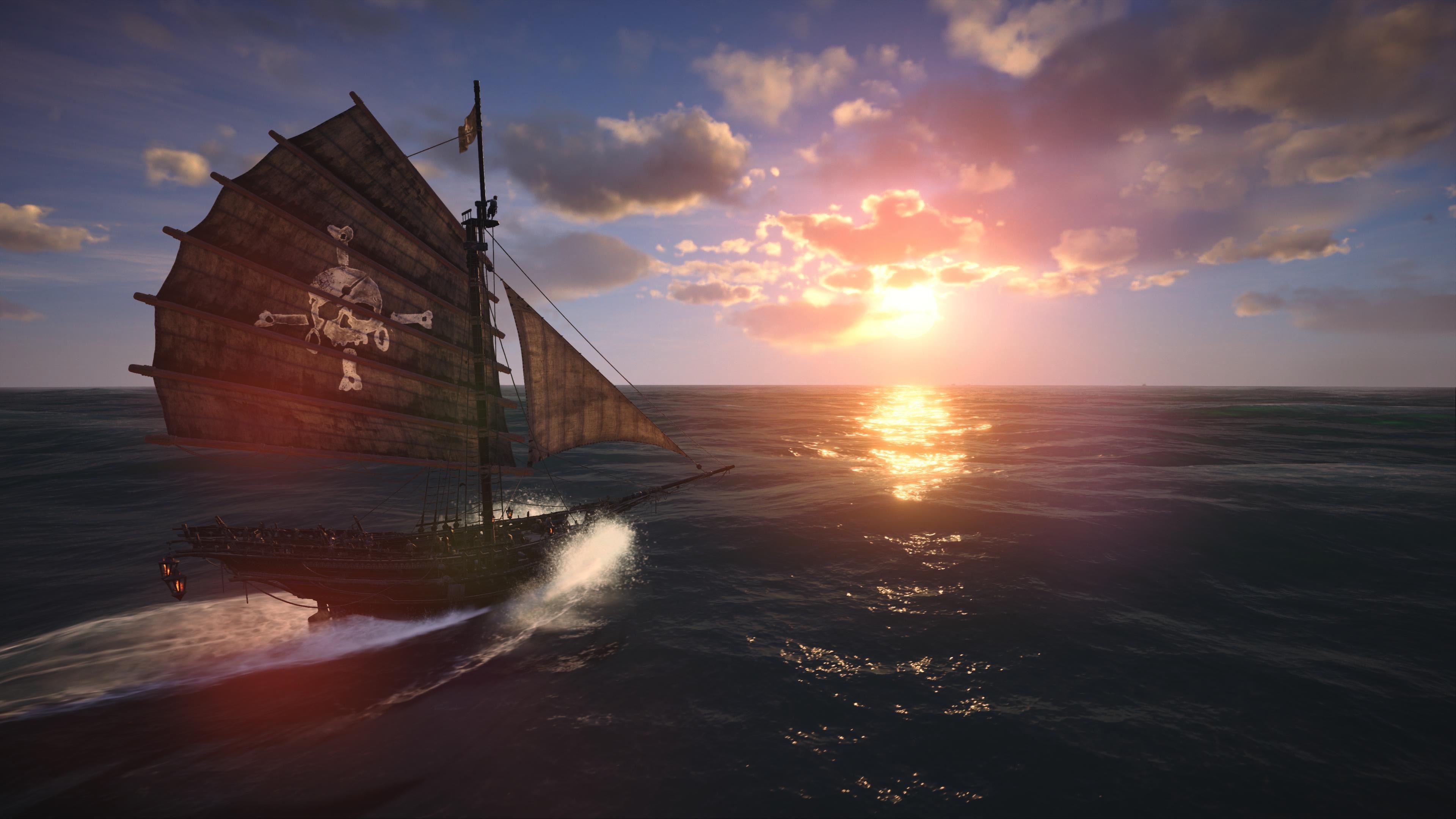
Skull and Bones' core loop is focused on upgrading your ship with better weapons, perks, and armor, but also with the overall goal of looking to exchange it all as soon as possible for bigger and better ships. While your pirate has their own leveling process, which is tied into unlocking more badass cosmetics, getting access to higher-level missions involves getting better ships and kitting them out with enhanced weaponry and armor.
This cycle is a huge driver initially, largely because sailing around and taking on enemy ships is a genuine delight. Skull and Bones is a stunning game, and a pleasure to explore from the water. Even if you're not able to physically man the sails yourself – as you're able to in something like Rare's Sea of Thieves – you have to adjust the steer, deal with the wind, and navigate difficulties like storms or huge ship-breaking waves. The same goes for the naval combat itself, but then that shouldn't really come as a surprise.
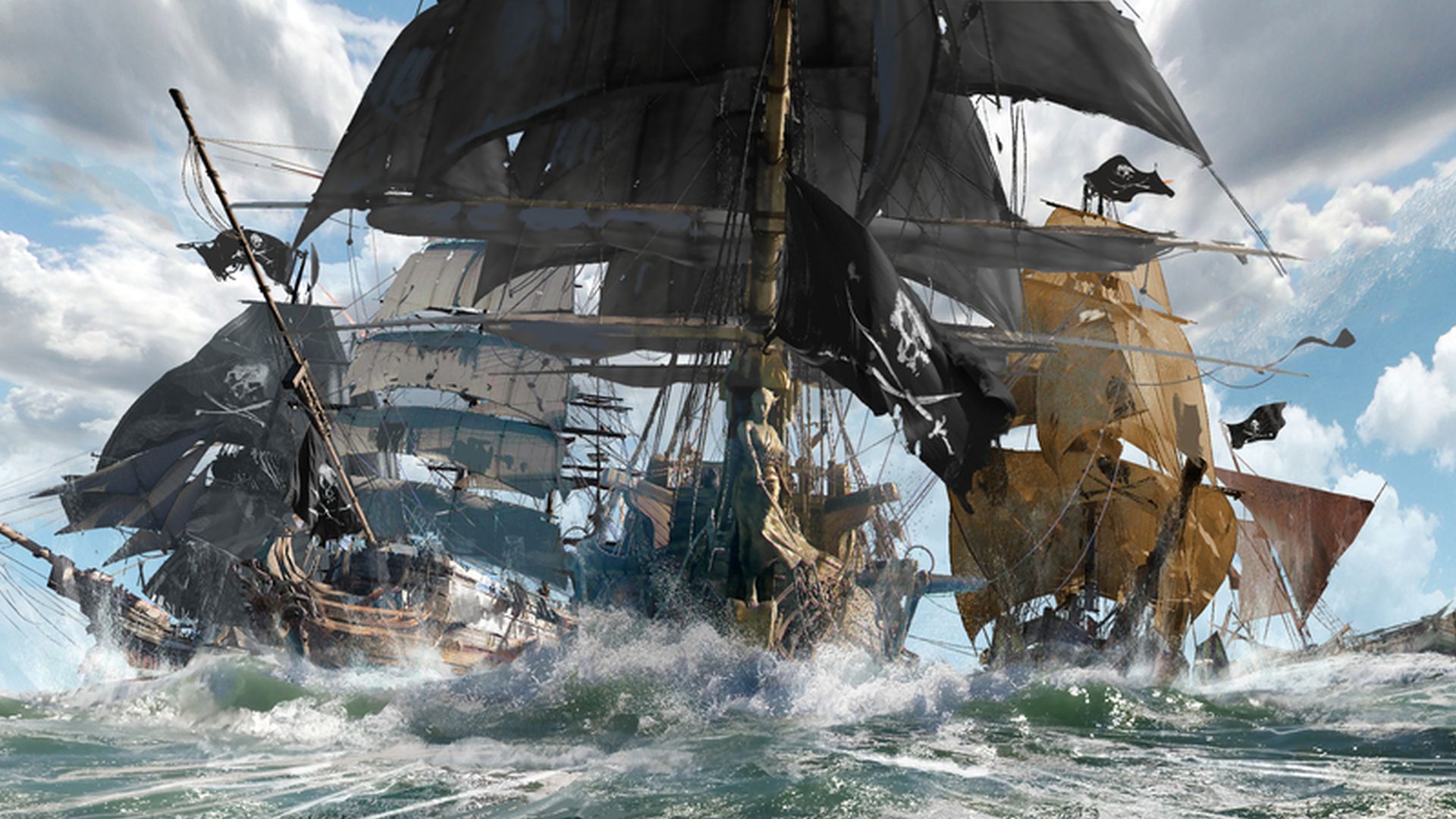
Skull and Bones builds on the foundations laid by 2013's Assassin's Creed 4: Black Flag – a game that did ship combat so well Ubisoft decided to make this experience in the first place. Combat is fluid and responsive, with you able to choose which weapons you're using just by adjusting the direction your ship is facing. There are handy guidelines to map that too, meaning you know exactly what you're doing in the heat of the moment. Weapons can also have specific effects like flooding or fire damage later on too, and seeing enemies with weapons like torpedoes or mortars only makes you want to unlock them for yourself.
You can find a lot of what you need just by sailing around, taking out enemy ships, or grabbing resources you can spot along the shoreline. Yes, that's right, even cutting down trees or gathering iron is done from your ship with a particularly mundane rhythm-based mini-game – you can't even get off your ship for some manual labor these days. But, some things you will have to plunder from the bases you'll find around the map, which is where some more of Skull and Bones' oddest quirks emerge.
Loot, shoot and pillage
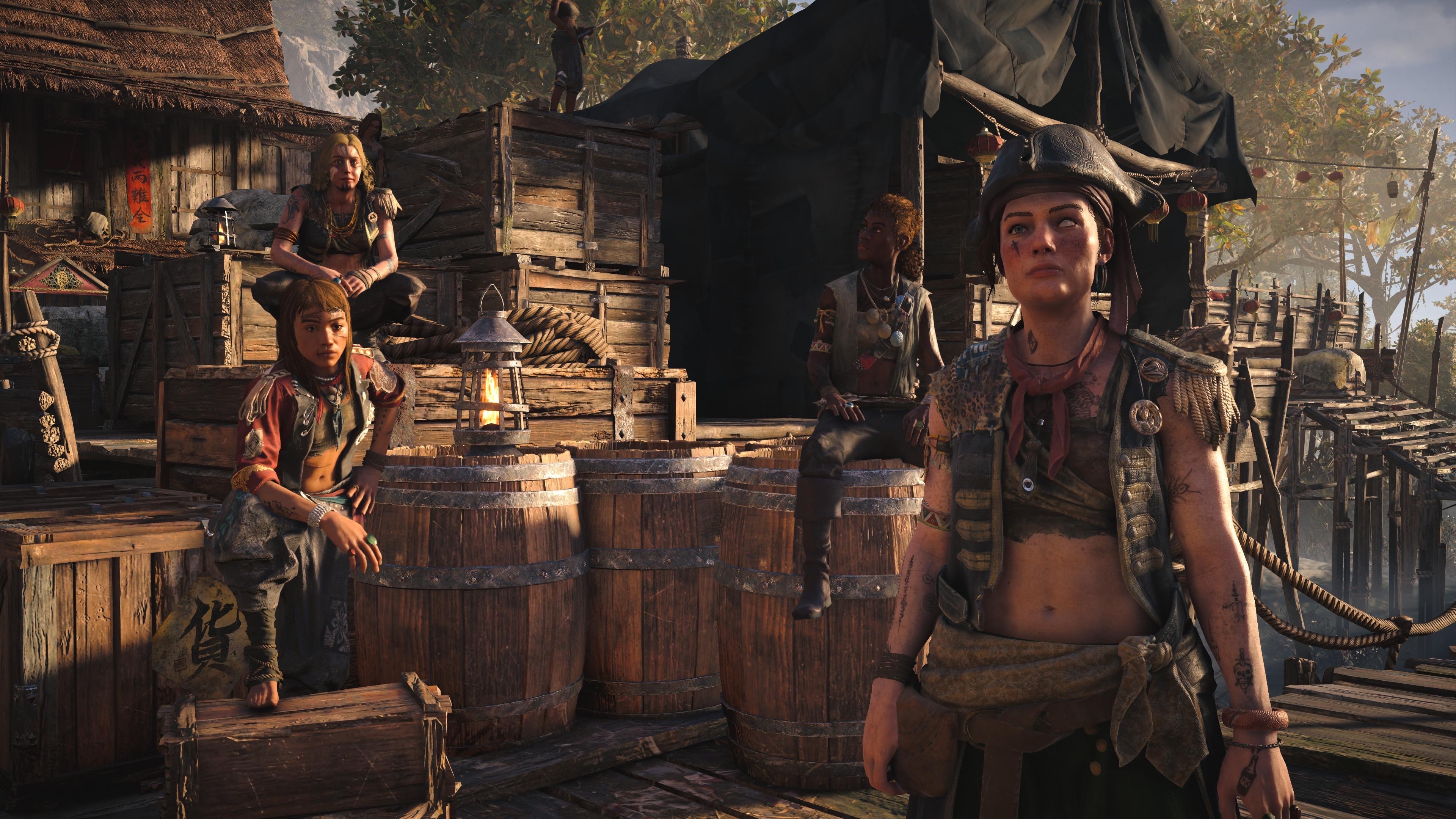
Plunders are a mission type where you assault a base from the water, attacking not only the structure along the shoreline but also attacking ships, which come for you in increasingly difficult waves. The early ones you'll find are easily tackled solo, but higher-level bases are practically impossible without some pirate pals by your side. You can call for help at any plunder site, which puts out a call for anyone on the map to come to your aid, though these cries for help time out after just 60 seconds. Frustratingly, any pirates who are willing to respond to a call can't actually flag that they're en-route, and there's not even a way to fast-track to someone's aid directly from the call that pops up on screen.
The same goes for any world events that might arise while you're sailing around, which feels particularly strange given that they regularly appear on the opposite side of the open-world map and usually on a very strict time limit. You also can't call for help on anything except for the plunder missions. You can hover your cursor over any plunder site and call for backup right then and there, but you can't do that for any other missions marked on your map, including specifically labeled co-op missions or higher-level events. This fragmented approach to simply just asking for help is a clear reflection of the multiplayer structure overall, and is only exacerbated by the game's attempt at matchmaking.

You can party up with other pirate captains via the social menu, but in the 30 hours I've been playing Skull and Bones I've yet to actually matchmake with anyone. Maybe that's indicative of player count, or simply people choosing to experience Skull and Bones solo as much as they can, but it's certainly been a frustration for me trying to experience everything the game has to offer. Skull and Bones is a game you need friends for, it's just whether you can find anyone who wants to play it with you.
In fact, the longer you play the more frustrating Skull and Bones becomes. The same quests are dished out on repeat, and Ubisoft is yet to squash some pretty frustrating bugs. One saw me 'fail' a bounty quest some 20-odd minutes into attacking a high-level ship, delicately chipping away at its formidable health bar, despite there being no visible timer on the quest itself. Another involves the Skull and Bones death mark, a problem that has become so prolific that it's become quite the running joke among players.
Skull and Bones feels like an Early Access game, one that just about manages to justify itself as a full release because the sailing and naval combat mechanics feel so good. But, with such odd MMO traits and late game that feels like too much of a grind for little reward, it really does struggle to live up to the game that Ubisoft originally pitched. Maybe it's got potential to grow in the same way Sea of Thieves has over the last five or so years, but I'm not sure yet that Skull and Bones has the same commitment to longevity.
Skull and Bones is being reviewed on PS5 with a code provided by the publisher.
More info
| Developer | Ubisoft Singapore |
| Release date | 2 July 2025 |
| Genre | Action |

Sam Loveridge is the Brand Director and former Global Editor-in-Chief of GamesRadar. She joined the team in August 2017. Sam came to GamesRadar after working at TrustedReviews, Digital Spy, and Fandom, following the completion of an MA in Journalism. In her time, she's also had appearances on The Guardian, BBC, and more. Her experience has seen her cover console and PC games, along with gaming hardware, for a decade, and for GamesRadar, she's in charge of the site's overall direction, managing the team, and making sure it's the best it can be. Her gaming passions lie with weird simulation games, big open-world RPGs, and beautifully crafted indies. She plays across all platforms, and specializes in titles like Pokemon, Assassin's Creed, The Sims, and more. Basically, she loves all games that aren't sports or fighting titles! In her spare time, Sam likes to live like Stardew Valley by cooking and baking, growing vegetables, and enjoying life in the countryside.
